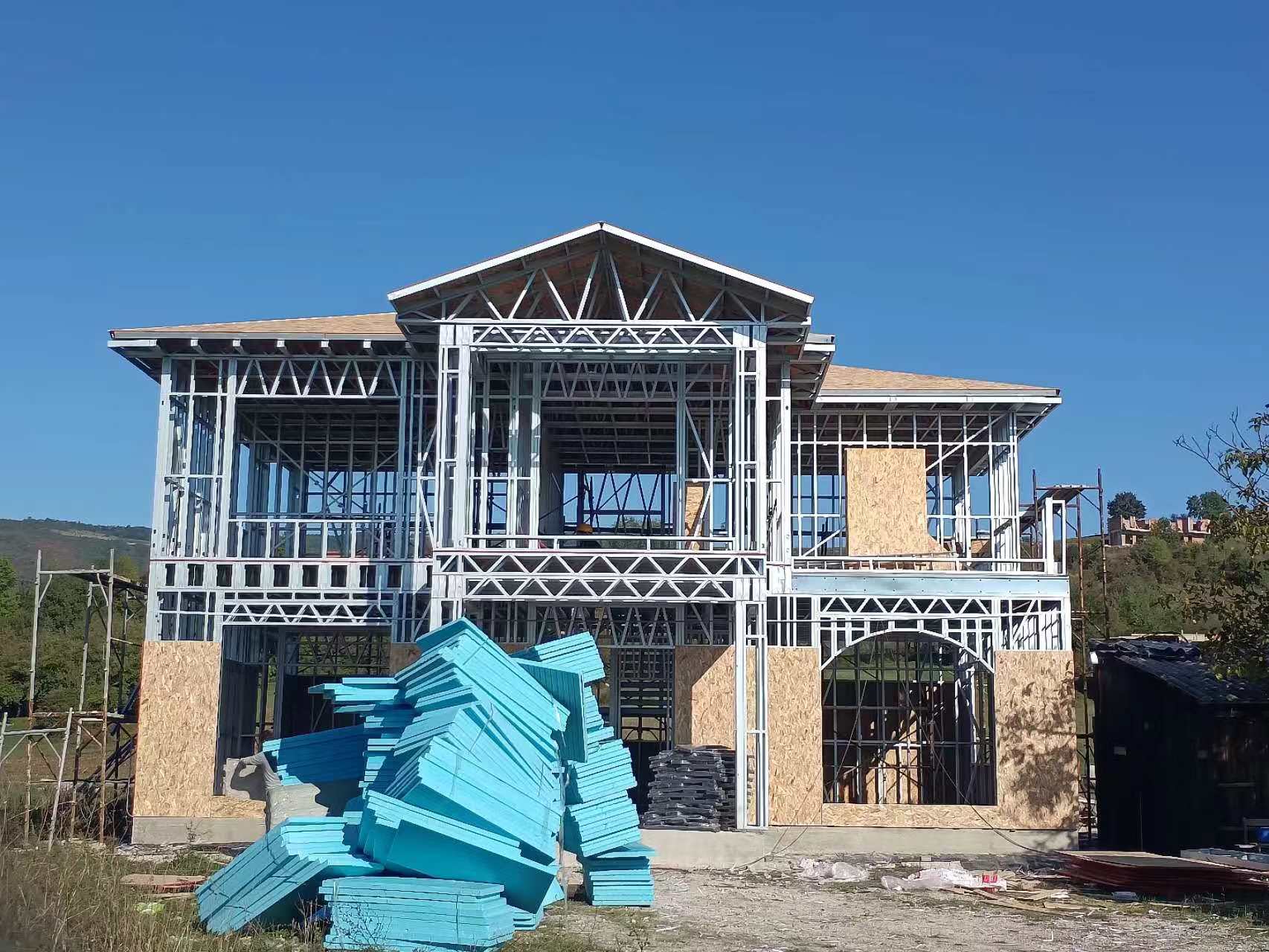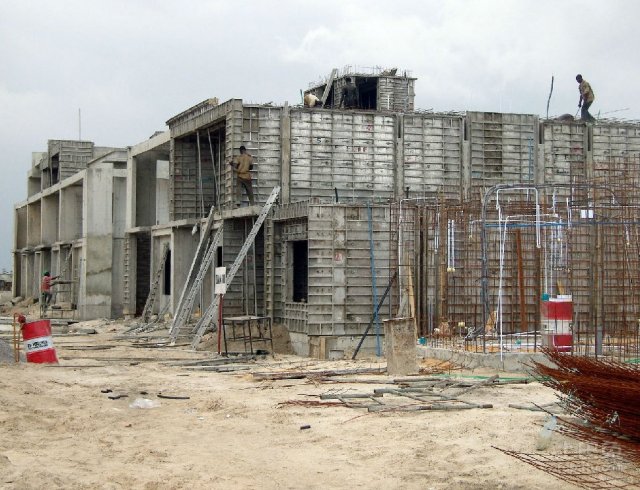In modern construction, light steel structure houses and reinforced concrete structures are two common forms of building. Although both have good load-bearing capacity and durability, they exhibit significant differences in design, construction, and application. This article will provide a detailed comparison of these two types of structures to help readers better understand their advantages and disadvantages.

light steel structure

reinforced concrete structure
1. Material Composition
Light steel structure houses primarily use steel as the main load-bearing material, resulting in lightweight and high-strength components. In contrast, reinforced concrete structures are made from a composite material consisting of cement and steel reinforcement. The lightweight nature of light steel structures simplifies foundation construction, while reinforced concrete structures are more suitable for high-rise buildings due to their heavier weight and strength.
2. Construction Efficiency
In terms of construction efficiency, light steel structure houses typically have an advantage over reinforced concrete structures. Components of light steel structures are usually prefabricated in factories and assembled on-site, significantly reducing construction time. Additionally, the installation of light steel structures requires relatively less skilled labor, making the construction process more efficient. On the other hand, the construction of reinforced concrete structures generally takes longer due to its complexity and multiple processes.
3. Seismic Performance
Seismic performance is a crucial consideration in building design. Light steel structures excel in seismic resistance due to their flexibility and lightweight characteristics. They can effectively absorb and dissipate seismic energy, reducing damage from earthquakes. In contrast, while reinforced concrete structures have high strength, their heavier weight may lead to greater impact during seismic events.
4. Environmental Impact
In terms of environmental considerations, light steel structure houses have certain advantages. The materials used in light steel construction are recyclable, and the waste generated during construction is relatively minimal. In contrast, the production process of reinforced concrete involves significant cement manufacturing, resulting in higher carbon emissions and a greater environmental impact.
5. Cost Comparison
Regarding costs, initial investment for light steel structure houses may be relatively high due to the cost of high-quality steel. However, the overall value tends to be better due to shorter construction times and simpler maintenance. While initial costs for reinforced concrete structures may be lower, their longer construction duration and higher maintenance costs can result in greater overall expenses.
6. Suitable Scenarios
Light steel structure houses are suitable for residential buildings, schools, offices, and temporary structures. In contrast, reinforced concrete structures are better suited for high-rise buildings, large commercial centers, and infrastructure projects like bridges and tunnels.
Conclusion
In summary, light steel structure houses and reinforced concrete structures each have unique advantages and applicable scenarios. The choice of structure depends on specific project requirements, budget, and construction conditions. As the trend in future construction leans towards the flexibility and environmental benefits of light steel structures, reinforced concrete will continue to play a vital role in large-scale infrastructure projects. Understanding the characteristics of both structures provides valuable insights for architects, engineers, and investors during project planning.